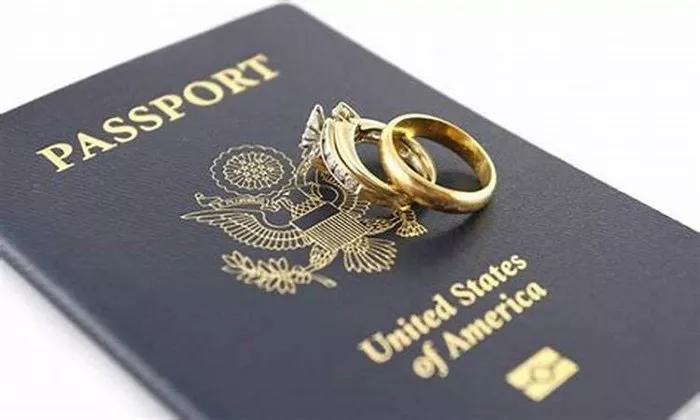In an increasingly interconnected world, love knows no boundaries. Couples from different countries often find themselves separated by distance, but fortunately, there are avenues for bringing them together. One such pathway is the fiancé visa, a process that allows a foreign national to enter the United States to marry their American citizen fiancé. While the journey to obtaining a fiancé visa can seem daunting, understanding the process can alleviate much of the stress. In this guide, we will delve into the intricacies of the fiancé visa process, from eligibility requirements to the final steps towards marriage.
Understanding the Fiancé Visa
The fiancé visa, officially known as the K-1 visa, is a nonimmigrant visa issued to the fiancé(e) of a U.S. citizen. Its primary purpose is to allow the foreign fiancé(e) to travel to the United States for the purpose of marriage. Once married, the foreign spouse can then apply for adjustment of status to become a lawful permanent resident.
Eligibility Criteria
Before embarking on the fiancé visa journey, it is crucial to ensure that both parties meet the eligibility criteria set forth by the U.S. Citizenship and Immigration Services (USCIS). The key requirements include:
1. Intention to Marry: Both the petitioner (the U.S. citizen) and the beneficiary (the foreign fiancé(e)) must have a genuine intention to marry within 90 days of the beneficiary’s entry into the United States.
2. Legal Capacity: Both parties must be legally eligible to marry. This entails being of legal age to marry according to the laws of the state in which the marriage will take place and being unmarried at the time of filing the petition.
3. Meeting in Person: The couple must have met each other in person at least once within the two years preceding the filing of the petition, unless the USCIS grants a waiver based on extreme hardship or cultural or religious reasons.
4. Financial Support: The petitioner must demonstrate the ability to financially support the beneficiary at 125% of the federal poverty guidelines. This is typically done by submitting an Affidavit of Support (Form I-134) along with supporting documentation.
5. No Prohibited Grounds: Both parties must be admissible to the United States and not barred from obtaining a visa based on certain grounds such as criminal history, immigration violations, or health-related issues.
Meeting these eligibility criteria is essential for a successful fiancé visa application.
The Application Process
Once the eligibility criteria are met, the next step is to initiate the fiancé visa application process. This process involves several steps and requires meticulous attention to detail. Here is an overview of the typical steps involved:
Filing the Petition (Form I-129F):
The first step is for the U.S. citizen petitioner to file Form I-129F, Petition for Alien Fiancé(e), with the USCIS. This form serves as the official request to bring the foreign fiancé(e) to the United States for marriage. Along with the completed form, the petitioner must submit supporting documents, including proof of meeting in person, evidence of intent to marry, and proof of financial support.
USCIS Processing:
Once the petition is filed, the USCIS will review it to ensure that all eligibility criteria are met and that the relationship is genuine. This process typically takes several months, during which the USCIS may request additional evidence or information.
Approval Notice:
If the petition is approved, the USCIS will issue a Notice of Action (Form I-797) indicating approval. The petition will then be forwarded to the National Visa Center (NVC) for further processing.
NVC Processing:
The NVC will send instructions to both the petitioner and the beneficiary regarding the next steps in the process. This may include the submission of additional forms and supporting documents, such as the DS-160 Nonimmigrant Visa Application and the medical examination report.
Consular Interview:
Once all necessary documents are submitted and processed, the beneficiary will be scheduled for a consular interview at the U.S. embassy or consulate in their home country. During the interview, a consular officer will assess the bona fides of the relationship and determine the eligibility of the beneficiary for the fiancé visa.
Visa Issuance:
If the consular officer is satisfied with the interview and approves the visa application, the beneficiary will be issued a K-1 visa, allowing them to travel to the United States.
Entry into the United States:
Upon arrival in the United States, the beneficiary must marry the petitioner within 90 days. Once married, the beneficiary can apply for adjustment of status to become a lawful permanent resident.
Important Considerations
While the fiancé visa process may seem straightforward, there are several important considerations to keep in mind:
1. Timing: The fiancé visa process can be lengthy, often taking several months from start to finish. It is crucial to plan accordingly and be prepared for potential delays.
2. Documentation: Accurate and thorough documentation is essential for a successful fiancé visa application. This includes proof of meeting in person, evidence of the genuine relationship, and financial support documents.
3. Communication: Open and honest communication between the petitioner and beneficiary is key throughout the process. Keeping each other informed and updated can help alleviate stress and ensure that all necessary steps are completed on time.
4. Legal Assistance: While it is possible to navigate the fiancé visa process without legal assistance, many couples choose to seek the guidance of an experienced immigration attorney. An attorney can provide valuable expertise and guidance, particularly in complex cases or situations where there are concerns about eligibility.
Conclusion
The fiancé visa process offers a pathway for couples separated by international borders to come together and build a life in the United States. While the process may seem daunting, understanding the eligibility criteria and following the necessary steps can help ensure a smooth and successful application. By staying organized, communicating effectively, and seeking appropriate guidance when needed, couples can navigate the fiancé visa process with confidence and look forward to a future together in the United States.


